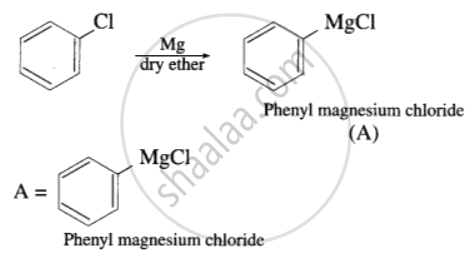Advertisements
Advertisements
Question
Complete the following reaction giving major products.

Solution

APPEARS IN
RELATED QUESTIONS
from the following pair would undergo SN2 faster from the other?
a. CH3CH2CH2I b. CH3CH2CH2Cl
Name the reagent used to bring about the following conversion.
1-Chloropropane to 1-nitropropane
Give reasons:
Haloarenes are less reactive than haloalkanes.
Distinguish between SN1 and SN2 mechanism of substitution reaction.
Observe the following and answer the question given below.

Name the type of halogen derivative.
Observe the following and answer the question given below.

Can it react by SN1 mechanism? Justify your answer.
Propane nitrile can be prepared by heating ____________
The following will react faster by SN1 mechanism
Major product of the following reaction is _______________
\[\ce{CH3-CH2-Mg-Br + NH3 ->?}\]
Explain aqueous alkaline hydrolysis of tert. butyl bromide.
The least reactive towards nucleophilic addition reactions is ____________.
Dehydrohalogenation of an alkyl halide is ____________.
How many metameric ethers are represented by the molecular formula C4H10O?
Which one is most reactive towards nucleophilic addition reaction?
What type of hybridisation is present in carbocation formed during the alkaline hydrolysis of 1- bromo-1- phenyl ethane?
\[\ce{C6H5CH2Cl + KCN(alc) -> X + Y}\]
Compounds X and Y are ____________.
Which of the following is FALSE regarding SN2 reaction mechanism?
What is the major product obtained in the sulphonation of chlorobenzene with concentrated sulphuric acid?
The major product formed when 2-bromobutane is treated with alcoholic KOH is ______.
The order of reactivities of the following alkyl halides for an SN2 reaction is ______.
Which of the following statements is incorrect regarding the dehydrohalogenation of alkenes?
Complete the following reaction giving a major product.
\[\begin{array}{cc}
\ce{CH3}\phantom{.................}\\
|\phantom{...................}\\
\ce{CH3 - C - CH2 - Cl->[Na/dry ether]A}\\
|\phantom{..................}\\
\ce{CH3}\phantom{................}
\end{array}\]
Observe the following and answer the question given below:

Can react by SN1 mechanism? Justify your answer.
Complete the following reaction sequences by writing the structural formulae of the organic compounds 'A', 'B' and 'C'.
\[\ce{2-Bromobutan ->[alc. KOH] A ->[][Br2] B ->[][NANH2] C}\]
What is the action of following on ethyl bromide?
alcoholic sodium hydroxide
Complete the following reaction giving major product.
\[\begin{array}{cc}
\ce{CH3}\phantom{.................}\\
|\phantom{...................}\\
\ce{CH3 - C - CH2 - Cl ->[Na/dry ether] A}\\
|\phantom{...................}\\
\ce{CH3}\phantom{.................}
\end{array}\]
Complete the following reaction giving major product.
\[\begin{array}{cc}
\ce{CH3}\phantom{.................}\\
|\phantom{...................}\\
\ce{CH3 - C - CH2 - Cl ->[Na/dry ether] A}\\
|\phantom{...................}\\
\ce{CH3}\phantom{.................}\\
\end{array}\]
Complete the following reaction giving major product.
\[\begin{array}{cc}
\ce{CH3}\phantom{................}\\
|\phantom{...................}\\
\ce{CH3 - C - CH2 - Cl ->[Na/dry ether] A}\\
|\phantom{...................}\\
\ce{CH3}\phantom{................}\\
\end{array}\]
